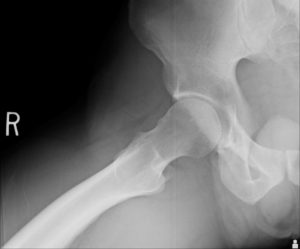Femoroacetabular Impingement (FAI) Specialist

Are you experiencing deep pain, catching or locking in the hip, or a pinching sensation when the hip is flexed or rotated? If so, you may have Femoroacetabular Impingement or FAI. FAI is a condition that may result in pain and damage to the hip joint due to an abnormal shape of the bones that make up the hip. Hip specialist, Dr. Jervis Yau provides diagnosis and both surgical and nonsurgical treatment options for patients in Santa Barbara who have symptoms of FAI hip impingement. Contact Dr. Yau’s team today!
Femoroacetabular Impingement (FAI) Overview
Femoroacetabular impingement (FAI) is a hip condition characterized by anatomic abnormalities of the bones of the hip joint during growth and development. The abnormal shape leads to decreased range of motion and mechanical impingement (pinching) of the soft tissue structures. Over time, chronic impingement can lead to degeneration and tearing of the hip labrum and cartilage. Santa Barbara, Goleta, Santa Maria and Ventura, California orthopedic hip specialist, Dr. Jervis Yau specializes in diagnosing and treating hip pathology due to impingement.
The hip is a ball and socket joint covered by articular cartilage that helps to distribute force and facilitate movement in a low friction environment. In patients affected by femoroacetabular impingement (FAI), the articular cartilage will gradually wear due to constant shearing forces from the abnormal boney anatomy. Along with articular cartilage injury, hip impingement can commonly lead to labral tears. The labrum is a circumferential structure of the hip that has a suction seal effect to enhance stability of the hip joint. Once torn, the hip looses stability and often leads to pain and dysfunction.
Are There Different Types of Hip Impingement?
Hip impingement may begin in adolescence and is a major cause of early degenerative joint disease in young, active patients.
There are three forms of femoroacetabular impingement (FAI):
- Pincer impingement: Extra bone of the acetabulum (socket) extends further than normal over the edge of the femoral head (ball), causing the socket to be too deep.
- Cam impingement: Abnormal bone formation at the femoral head and neck that contacts the acetabular rim when the hip is in flexion, adduction and internal rotation.
- Mixed impingement: Presence of both pincer and cam deformities leading to impingement.
What are Common Femoroacetabular Impingement (FAI) Symptoms?
It is unknown how many patients have hip impingement. Many patients will have the abnormality but not know because they are asymptomatic. When patients start having symptoms, it is likely due to progressive damage to the articular cartilage or labrum.
Femoroacetabular impingement (FAI) commonly causes patients to experience sharp, ongoing pain in the groin area, especially when the hip is flexed, adducted (towards midline) and internally rotated (turned in). Patients may also notice stiffness of the joint and pain that radiates to the outside of the hip or down the thigh.
How is FAI Diagnosed?
In order to diagnose femoroacetabular impingement (FAI), Dr. Yau will perform a thorough medical review and physical examination. One specific maneuver he will perform during the examination is an anterior impingement test. This test requires Dr. Yau to flex the knee to the patient’s chest and then rotate it in towards the shoulder. If this causes groin pain, hip impingement may be the diagnosis. A series of x-rays will also be performed in all suspected cases of hip impingement. This will confirm the diagnosis as well as assess for any associated joint degeneration. MRI arthrogram (contrast dye injection into the hip prior to MRI scan) may be ordered to evaluate for the possibility of cartilage and labral damage in the hip.
How is Femoroacetabular Impingement (FAI) Treated?
Non-Surgical
Femoroacetabular impingement (FAI) treatment will depend on symptom severity. Dr. Yau commonly recommends a conservative approach as the initial treatment plan. Patients can expect to utilize a combination of rest, modified activities, physical therapy and anti-inflammatory medications (NSAIDs).
Surgical
Dr. Yau will perform arthroscopic hip surgery in patients with symptomatic hip impingement that fail conservative treatment. This is a minimally invasive approach to repair the hip’s labrum and articular cartilage. A femoroplasty procedure may involve shaving the bony rim of the acetabulum in cases of pincer impingement and shaving the extra bump on the femoral head-neck junction in cases of cam impingement.
For additional information on femoroacetabular impingement (FAI), or to determine if you are suffering from hip impingement, please contact Dr. Jervis Yau, orthopedic hip specialist serving the Santa Barbara, Goleta, Santa Maria and Ventura, California communities.
